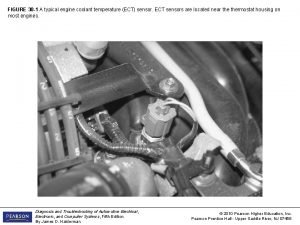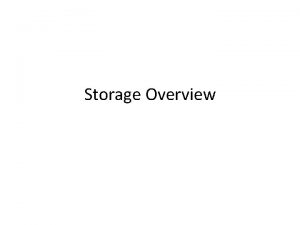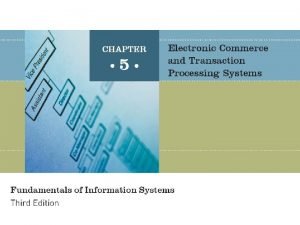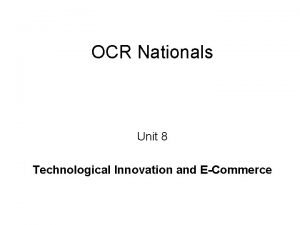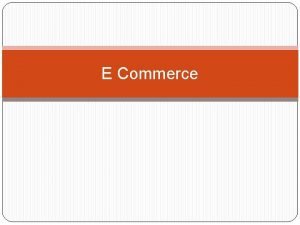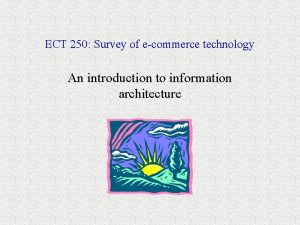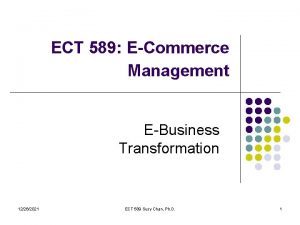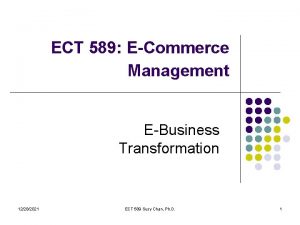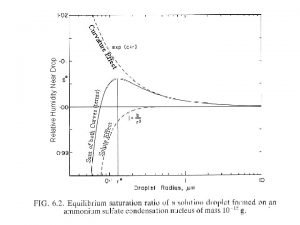ECT 250 Survey of ecommerce technology Networking Networking




























- Slides: 28

ECT 250: Survey of e-commerce technology Networking

Networking In a network, communications equipment is used to connect two or more computers allowing the sharing of various hardware, software, and data resources. The basic components of a data communications systems used to transmit information are: • A sending device • A communications link, consisting of both communications hardware and software. • A receiving device 2

Data transmission Binary information is represented by the presence or absence of an electronic pulse. This is referred to as digital signaling. Some communications devices in place today were designed for voice data which uses analog signals. Data communications systems may use these existing lines. 3

Piggybacking technology If the wires in place for communication use analog signals, digital data must be converted to an analog signal in order to be transmitted. • The digital signal is transformed into an analog wave in a process called modulation. • The analog wave is transmitted. • The analog signal is converted back into a digital signal during a process called demodulation. 4

Modems A modem is the hardware device that does these conversions. (Short for modulate/demodulate). Modem speeds are referred to by the number of bits per second (bps) at which they can transmit and receive data. • The earliest modems has speeds around 300 bps. • Later modems had speeds ranging from 9600 to 33, 600 bps. • Today modems have speeds of 56, 000 bps (or 56 Kbps). 5

Communication links A communications link is the physical medium used for transmission of data. There are several kinds: • Wire pairs/twisted pairs • Coaxial cables • Fiber optics • Microwave transmission • Satellite transmission 6

Wire pairs Sometimes called twisted pair, this media uses wire pairs twisted together to form a cable. The cable is then insulated. Wire pairs are popular since this form of cabling is already installed and available in most places (telephone cabling). It is, however, susceptible to electrical interference, called noise. 7

Coaxial cables A coaxial cable is a single conductor wire that is thickly shielded. • It sends a very powerful signal. • It is used for cable television. • These cables can transmit data at a very fast rate. Bundles of these cables can be laid underground or under the sea. 8

Fiber optic cables use light instead of electricity to transmit data. • The cables are made of ultra thin glass wires. Light beams can be transmitted for miles with little attenuation (reduction in signal strength). • This media can handle many different types of information including voice and data at the same time. 9

Microwave transmission In microwave transmission the signals are wireless and can travel through the atmosphere. Signals can, however, be blocked by the curvature of the earth. (Line of sight transmission) To prevent this, relay stations are located in high areas and are used to retransmit data to other relay stations. 10

Satellite transmission The basic components of satellite transmission: • Earth stations: Send and receive signals. • Transponder: Receives a transmission from an earth station, amplifies the signal, changes the frequency, and retransmits the data to the receiving earth station. The entire process takes only a few seconds. Communications satellites are positioned in a geosynchronous orbit. 11

Internet service providers • Internet access providers or Internet service providers offer individuals and companies access to the Internet. • There are typically several connection options. • The primary difference between various ISPs is the connection bandwidth (the amount of data that can travel through a communication line in a given unit of time) available. 12

Connection terminology • The traffic on the Internet and the ISP can affect the net bandwidth (the actual speed at which information travels taking traffic into account). • Upstream, also called upload, occurs when information is sent from you to the ISP. • Downstream, called download or downlink, occurs when information flows to your computer from the ISP. Example: Web page download. • Upstream bandwidth differs from downstream bandwidth for satellite and cable connections. 13

Telephone service • POTS uses existing telephone lines and an analog modem to provide a bandwidth of about 56 Kbps. • Higher grades of service use the Digital Subscriber Loop (DSL) protocol. These include: – Integrated Services Digital Network (ISDN), available since 1984. – Asymmetric Digital Subscriber Line (ADSL) – Symmetric Digital Subscriber Line (SDSL) Upstream: 16 to 640 Kbps Downstream: 1. 5 to 9 Mbps (million bps) 14

Cable connections • Cable modems connect to the same coaxial cable that serves television. • It is connected via twisted pair wire to a PC and provides a cost-effective and high bandwidth connection to an ISP. • Upstream: 768 Kbps • Downstream: 10 Mbps • Cable bandwidths vary with the number of users. 15

Higher bandwidth options • Large firms with high traffic connect to an ISP using higher bandwidth telephone connections. – T 1: Operates at 1. 544 Mbps – T 3: Operates at 44. 7 Mbps These connections are more expensive than the previous options. • Network access providers use T 1 and T 3 lines as well as Asynchronous Transfer Mode (ATM) connections with bandwidths up to 622 Gbps. 16

Price and speed comparisons • When making decisions about Internet connections you must consider: – Bandwidth needed – Cost of startup – Monthly fees – Traffic issues • There is a chart comparing features between various options on page 72 of the text. • Depending on where you live, you may have other options, such as satellite connections. See the e-commerce links and sites. 17

Types of networks Networks can be classified according to their geographical reach. • Local area network • Metropolitan area network • Wide area network 18

Wide-area network A wide area network (WAN) is a network of computers, terminals, and peripheral devices that is located over a very large area. • It can span a state, country, or the world. • The central hubs or servers are usually powerful minicomputers or mainframes. (The server is usually referred to as the host computer). • A single WAN may use a variety of transmission methods. 19

Local-area network A local area network is a collection of computers that share hardware, software, and data over a shorter geographical area than a WAN. (Usually limited to a single building or compound). A LAN can also be very small. Example: LAN in my apartment contains one PC, one printer, and two laptops. 20

Purposes for networks Networks can also be classified according to their purpose: 1. Internet 2. Intranet 3. Extranet 21

Intranets • Only selected individuals can use an intranet. Example: CTI Intranet • Intranets are a popular and inexpensive way to distribute information. • Intranets typically use existing infrastructure. • Benefits include timely and current information delivery, cheaper internal communication, low maintenance costs, and easy on-line training. 22

Extranets • Extranets provide the private infrastructure for companies to coordinate their purchases, exchange business documents, and communicate with each other. • Some start out as intranets and become available to people outside the institution in an effort to reduce the workload for employees. Example: Fed. Ex • There are three types of extranets: – A public network – A secure (private) network – A virtual private network (VPN) 23

Public network • A public network extranet is one which can be accessed by the public or one in which two or more companies agree to link their intranets using a public network. • Security is an issue in this configuration. • This type of extranet is uncommon because of the risk. 24

Private network • Uses a private, leased-line connection to connect two companies. • A leased line is a permanent, dedicated telephone connection between two points. The line is always active. • This arrangement is significantly more secure. • The big drawback is the cost. • This type of arrangement does not scale well since each new company requires another leased line. 25

Virtual private network • A VPN uses public networks but through a system called tunneling or encapsulation. • Tunnels are private passageways through the public Internet that provide secure transmission from one partner to another. • Separate security shells are used with the most sensitive data under the tightest controls. • VPNs establish short-term connections in real time that are broken once the session ends. • This arrangement is inexpensive and scales well. 26

Protocols A protocol is a set of rules for the exchange of data across communication lines. Because telecommunications systems use a wide variety of hardware and software, protocols are needed to coordinate communication. What kinds of issues do protocols need to handle? 27

Tasks for protocols Protocols need to handle the following tasks: • Identify the different devices in the communications path. • Establish the speed and method for transmission of data. • Alert the receiving device to the incoming data. • Define the method for the receiving device to confirm the receipt of the data. • Determine the methods of error checking and correction. Common Internet protocols include TCP/IP, SMTP, POP, IMAP, FTP, and HTTP. We will discuss each of these in more detail later. 28
 Leuckopenia
Leuckopenia Dr mohan tripathi
Dr mohan tripathi Contraindications of ect
Contraindications of ect Antonio orlando bristol
Antonio orlando bristol Sensor ect
Sensor ect Two technicians are discussing a stepped ect circuit
Two technicians are discussing a stepped ect circuit Software defined networking vs traditional
Software defined networking vs traditional Data plane control plane and management plane
Data plane control plane and management plane 叫叫abcde
叫叫abcde Optical networking technology
Optical networking technology Network storage types
Network storage types Unit 2 technology systems exam
Unit 2 technology systems exam Objectives of ecommerce
Objectives of ecommerce Operations management in ecommerce
Operations management in ecommerce Unit 8 ecommerce
Unit 8 ecommerce Ethical issues of e commerce
Ethical issues of e commerce Ecommerce java
Ecommerce java Value proposition ecommerce
Value proposition ecommerce E commerce and world wide web
E commerce and world wide web E commerce enablers
E commerce enablers Ecommerce and ebusiness
Ecommerce and ebusiness National ecommerce strategic roadmap
National ecommerce strategic roadmap Consumer oriented e commerce application
Consumer oriented e commerce application Ken ott ecommerce
Ken ott ecommerce Objective of ecommerce
Objective of ecommerce E business definition
E business definition Ecommerce adalah
Ecommerce adalah 6 month plan template
6 month plan template Ecommerce content syndication
Ecommerce content syndication




